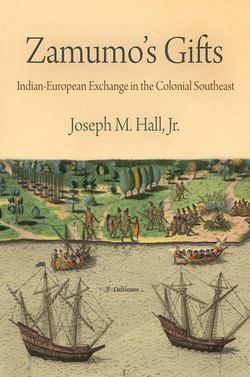Zamumo's Gifts

Реклама. ООО «ЛитРес», ИНН: 7719571260.
Оглавление
Joseph M. Hall Jr.. Zamumo's Gifts
Отрывок из книги
Zamumo’s Gifts
Series editors: Daniel K. Richter, Kathleen M. Brown, and David Waldstreicher
.....
If it is difficult to understand this balance among towns, it is even more difficult to look within towns. To speak of the power of Mississippian towns usually implies speaking of the power of chiefs over towns. Although rare and sacred goods (and the mounds where many were buried) seem to justify this perspective, chiefs depended on the people who accorded them respect, provided them fine foods, manufactured their ornaments, and built the mounds atop which they lived and worshipped. Through the reciprocal relations of leaders and followers, of men and women, and of friends and relations, commoners negotiated the bonds that held their towns together. Such negotiations in turn influenced exchanges among towns. As much as Zamumo would have liked to convince de Soto otherwise, chiefs were not the only ones who exchanged things.
Common people, like their leaders, tended to live on their stored agricultural surpluses, especially corn, squash, and, after about 1200 c.e., beans.29 They supplemented this diet with nuts, berries, fish, water-fowl, and deer.30 Mississippians organized many of the tasks of subsistence along lines of gender. The men and women of pre-contact Tukabatchee, a prominent town on the Tallapoosa River, manufactured the tools necessary for their tasks in separate spaces in their homes. The stone flakes left over from men’s manufacture of arrowheads litter one corner while the broken pottery from women’s ceramic making lies in another. If the activities of their colonial-era descendants are any guide, Mississippian men probably cleared the agricultural fields and hunted while women cultivated the crops and gathered other seasonal foods that grew wild. Language reflected these divisions, with Muskogean grammar and vocabulary varying according to the gender of the speaker.31 Much to their chagrin, French traders among the Natchez learned about a similar linguistic divide, for “by chiefly frequenting the women, [they] contracted their manner of speaking, which was ridiculed as effeminacy by the women, as well as the men, among the natives.”32 Men’s and women’s complementary roles in family and social life carried into political life as well. Among elite families, men apparently had greater access to the chieftaincy than women, and those few commoners who earned burial in or near a temple mound were usually distinguished warriors.33 Women’s importance as the principal providers of food endowed them with significant influence in the household, and senior women could help shape the ideas of their clan members who dwelled with and near them.34 Bound together in relationships in which each provided and each received, men’s and women’s power depended less on control than interdependence.
.....